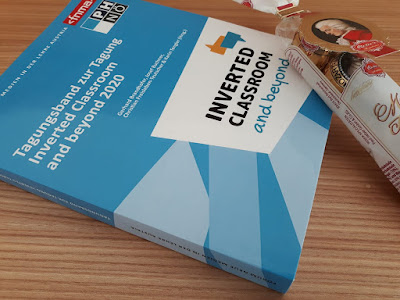Don't just follow the flipping boom
The international trend has been for new framework curricula published in several countries for schools to encourage teachers to change their classroom teaching from “teacher-centered” to more “student-centered” approaches. These days, the idea of “flipping” the teaching and learning process fascinates many teachers who are trying to change their way of acting in class. As with any new trend, there are several teachers who are just following the flipping “boom” and trying to use it as a model, as well as vendors selling their flipping-related products. On the web, there are numerous blogs and discussions either praising how flipping has truly individualized learning for students or groaning that the approach is nothing transformative at all.
The flipped classroom (FC) is often associated with watching videos at home before lessons. Videos are useful in many respects and make it easy to differentiate learning: students can watch them several times, skip the parts they already know, and watch them whenever they like. However, though videos have many advantages, they are not at the center of the flipped learning (FL) approach. If nothing else changes, the move from a traditional lecture to an online presentation of the same lecture is unlikely to result in learning differences.
FC as a method of teaching does not guarantee a learner-centered learning culture because it simply puts the focus on moving tasks in space and time, rather than on increasing engagement, autonomy or student centeredness. However, FC can be the important first step in teacher’s professional development, if this new way of acting pushes the teacher new way of thinking about learning. In sum, in this blog FC indicates a teaching method or technical change in traditional teaching, whereas FL is a learning culture, which is flipping not only the actions in a classroom but also many of the teachers’ pedagogical assumptions about teaching and learning.
As a teacher I have seen like many others the positive results of flipping in increased motivation and self-regulated learning amongst the students. The question is still why and under what conditions FL works. Here, I offer you one model for FL which has three key components (link to the article):
This blog purpose is to make teachers and researchers curious to understand better what is central in FL, questioning what we are trying to achieve by applying it, and further asking what role of formative assessment is in creating FL culture.
The flipped classroom (FC) is often associated with watching videos at home before lessons. Videos are useful in many respects and make it easy to differentiate learning: students can watch them several times, skip the parts they already know, and watch them whenever they like. However, though videos have many advantages, they are not at the center of the flipped learning (FL) approach. If nothing else changes, the move from a traditional lecture to an online presentation of the same lecture is unlikely to result in learning differences.
FC as a method of teaching does not guarantee a learner-centered learning culture because it simply puts the focus on moving tasks in space and time, rather than on increasing engagement, autonomy or student centeredness. However, FC can be the important first step in teacher’s professional development, if this new way of acting pushes the teacher new way of thinking about learning. In sum, in this blog FC indicates a teaching method or technical change in traditional teaching, whereas FL is a learning culture, which is flipping not only the actions in a classroom but also many of the teachers’ pedagogical assumptions about teaching and learning.
As a teacher I have seen like many others the positive results of flipping in increased motivation and self-regulated learning amongst the students. The question is still why and under what conditions FL works. Here, I offer you one model for FL which has three key components (link to the article):
- a goal component (green): a student as an individual, self-regulated learner
- a method component (yellow): a special kind of collaborative learning accompanied by efficient scaffolding
- a facilitator component (blue): the teacher’s changed role from a traditional teacher to a facilitator of collaborative working.
This blog purpose is to make teachers and researchers curious to understand better what is central in FL, questioning what we are trying to achieve by applying it, and further asking what role of formative assessment is in creating FL culture.


